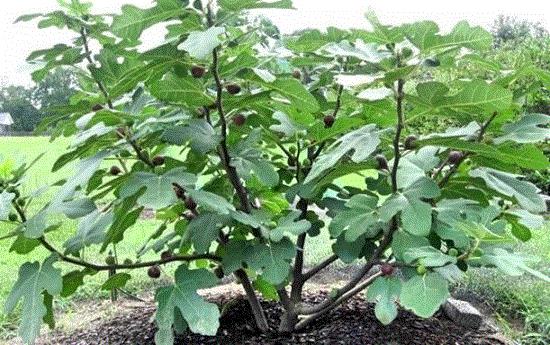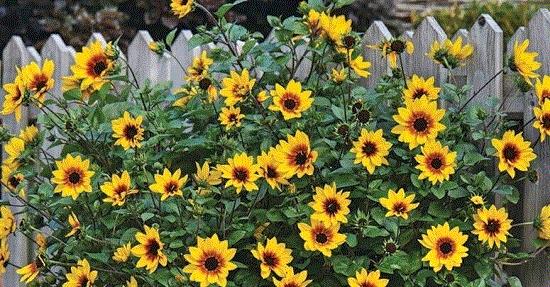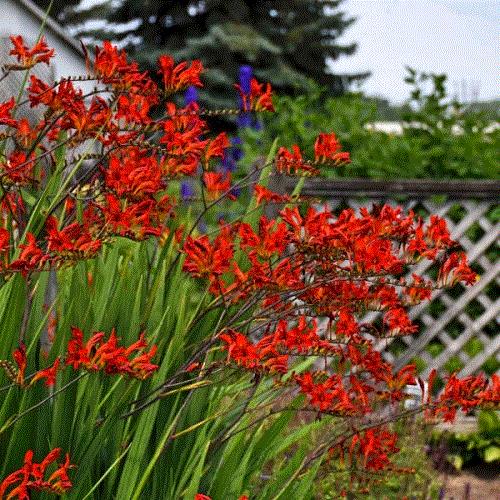Jerry Lee
It’s with great sadness that I start off this edition by reporting on the passing of Jerry Lee. For those who didn’t know Jerry well, simply put, he’d spent his lifetime in the industry and was a wealth of knowledge. While never one to be in the foreground of a photograph (a bit shy), he certainly was a booming voice for our industry when it came to nationally important issues.
He did pioneering work on understanding water remediation strategies for nursery producers, developing a systems-based strategy for pest management, and taught many aspiring growers and students what it meant to be an industry leader. He also was a leader on immigration issues and most recently with AmericanHort as a consultant, working to develop the SANC (Systems Approach to Nursery Certification) program. Jerry will be sorely missed by the entire Green Industry, as his work has impacted us all in positive ways, whether we know it or not.

There are no plans for a service at this point—and out of respect for the wishes for privacy from Jerry, his family, and friends—no further information has been provided. Rest in peace, buddy.

Little Miss Figgy
This new Sunset Plants/Southern Living Plants Collection introduction wins the 2019 Punny Plant Name of the Year award. But a plant is much more than a name and this one is a new intro that fills a niche.
Unless you've been residing under a large stone, you’re aware that edible plants are still hot. And when it comes to edible plants, it’s hard to find a taxa tougher than figs. Seriously, the criteria for success are usually two-fold. First, dig a hole. Second, plant fig in hole. Mulching optional. Water only if you plant in spring … if planting in fall you get to be even more lazy. Wait one to two years and then chew on figs. Of course, this only applies to those residing in USDA Zones 7 to 10. What can I say—plants are like people and none are perfect.

What has me so excited about Little Miss Figgy, however, is its size. Listed at 6-ft. tall and 4-ft. wide, it's a fig that could double as a Sumo wrestler. More importantly, it’s a third of the size of most fig cultivars, and as a result, will actually fit into an urban landscape. That’s quite an impressive accomplishment!
And a fig fun fact or two—a fig isn’t the fruit, it’s the flower you’re eating, which is pollinated by moths!

Monrovia Announces 2019 Featured Plants Collection
Last week, Monrovia unveiled its 2019 Featured Plants collection, showcasing a diverse group of exclusive offerings. An overview of the 2019 Featured Plants collection is available in the Featured Plants Lookbook on Monrovia's website. I’ve included a blurb about each one below.
Monrovia’s 2019 Featured Plants include (with Monrovia’s descriptions):
-
The Seaside Serenade Series Hydrangeas that have a more compact size, sturdier leaves and stems, and rebloom over longer summers
-
Winter-ready plants, such as Japanese Maples that provide sculpture and structure even where winters are shorter, and Cascade Blush Lenten Roses, which bloom from late winter to early spring
-
Compact plants for smaller outdoor spaces, such as Little Ragu Sweet Bay, Tiny Tower Italian Cypress or flowers including Lemon Puff Shasta Daisy
-
Easy care, high-reward plants, such as the SunBelievable Brown Eyed Girl Helianthus, which produces over 1,000 flowers in a single season
-
Zen-inducing evergreens like Ember Waves Western Arborvitae
-
Tough-but-gorgeous plants such as Evolution coneflowers, hardy Grace N’ Grit roses and Sparkler Arrowwood Viburnum
-
Edibles including Bountiful Blue Blueberry shrubs
-
Fragrant flowers like Pink-A-Boo Camellia
-
Pollinator-friendly plants including FloralBerry Hypericum, La Barbe Bleue, Bluebeard Zestful Grapes and Golf Ball Kohuhu
-
Low-water usage plants like Baby Pete Lily of the Nile, VIBE Ignition Purple Salvia and new stonecrops, aloes and evergreens
Discover a selection of the 2019 Featured Plants collection in the Featured Plants Lookbook.

SunBelievable Brown Eyed Girl Helianthus is a favorite of mine and seems to be a great performer across the U.S.
So what in this group most excites me? I’d have to give the nod to SunBelievable Brown Eyed Girl Helianthus. I’ve seen it in several trial gardens and two things struck me: It’s clean, shedding spent petals and not having any major leaf spot or mildew issues. It’s also a prolific bloomer, never really seeming to take a respite from flowering during the season.

Health Canada Speaks Out on Glyphosate
If I see one more personal injury commercial related to glyphosate, I may just turn the TV off for good. It’s amazing how the whole "glyphosate causes cancer" debate went from school zone speed straight to the Autobahn.
That’s why I was intrigued when a colleague sent me the official Health Canada press statement on health risks of glyphosate dated January 11, 2019. The report included some pretty direct and unambiguous statements. Two of these are, “Our scientists left no stone unturned in conducting this review. They had access to all relevant data and information from federal and provincial governments, international regulatory agencies, published scientific reports, and multiple pesticide manufacturers. This includes the reviews referred to in the Monsanto Papers. Health Canada also had access to numerous individual studies and raw scientific data during its assessment of glyphosate, including additional cancer and genotoxicity studies.”
Followed by “No pesticide regulatory authority in the world currently considers glyphosate to be a cancer risk to humans at the levels at which humans are currently exposed.”

Health Canada lowers the boom on glyphosate health risks ... or lack thereof.
Well, now, that seems pretty straightforward. And that noise you just heard … it was the cry of hundreds of personal injury attorneys who just wasted a lot of cash on commercial air time.

Crososmia Getting Some Love
Thanks to Katie Dubow at Garden Media Group for bringing to my attention that crocosmia was recently named the Bulb of the Year by bulb.com. It’s hard to go wrong with crocosmia, as it checks a lot of boxes. Flower color is absolutely fantastic, with species/cultivars available ranging from yellow to orange to red.
While hardy into Zone 5b if in a protected site, it’s recommended to dig up bulbs if you’re in 5b to 6a and store them in a paper bag in a dark cool spot inside. If you’re in Zones 6b to 9, you can just leave them in-ground.

Lucifer embodies elegance and yet is a tough cultivar, performing well in the harshest spots.
The most known cultivar of crocosmia is Lucifer (Crocosmia xcurtonus), which is a clump-forming plant with scarlet red flowers on 3-ft. scapes that gracefully arch outward (taking on the orientation of a fern leaf). I like using it among liriope or mondo grass, as it provides a surprise in late spring-summer.
I also like the fact that it's tough, not requiring any care to speak of. Definitely a plant that needs to be used more. Oh, and did I mention hummingbirds will fight over this thing? Which is a blast to watch.

Research Station Saved ... By the Industry
It always brings me joy when I can report some good news that you helped make happen.
Last week, I received word that Kansas State University’s John C. Pair Horticulture Research and Extension Centerhad escaped the chopping block and will remain open!
If you remember back to June 2018, I went on an epic rant about the apparent eroding of support for our industry from Land-Grant University administrators who simply don’t understand the importance of horticulture. Well, you came through big time and the Kansas State University faculty are sure appreciative. In fact, I received a note from Dr. Cheryl Boyer (KSU Associate Professor of Horticulture) that sums up the impact that the industry had on this epic battle. Here's Cheryl:
“Would you mind letting our amazing industry know what an incredible impact their response has had? We want to say THANK YOU from the bottom of our hearts! We are very grateful for your support! We asked you to make some noise and you did! Your phone calls, emails and letters to KSU administrators made a difference this year. Thank you for sharing with them about the value and importance of ornamental horticulture in Kansas, the Great Plains, the nation and our world. We did it!”
Now that’s a great post-Valentine’s Day note, if you ask me!

Horticulture Research Institute 2019 Projects Announced
The Horticultural Research Institute (HRI) recently announced the portfolio of research projects funded in 2019. Projects range from innovations to crop production for both greenhouse and nursery segments, water management in landscapes, emergent pest issues, and economic and marketing analyses. A total of $437,200 was awarded this year.
The Horticultural Research Institute’s mission is to direct, fund, promote and communicate horticulture research. Supporting research that challenges current methods and bridges the divide between businesses and the consumer is exactly how HRI helps build prosperous businesses, advance the green industry and fulfill its core vision.

Here's the list of funded projects. See something that interests you? Don’t be shy … contact the researchers and you may be able to get involved.
-
"Off the sales floor & into the cart: Analyzing the path to plant purchases"—Dr. B. Behe, Michigan State University
-
"Fertility, population dynamics, & pollinator attractiveness of standard & sterile cultivars: Buddleia as the case study may inform the way forward for our national industry"—Dr. R. Contreras, Oregon State University
-
"Seed your future"—Dr. J. Dole, North Carolina State University and S. Yoder, Seed your Future
-
"RFID & beyond: Using RFID, drones, and BLE to improve crop inventory management"—Dr. R. Fernandez, Michigan State University
-
"Fundamental aspects of auxin foliar spray applications to woody plant cuttings"—Dr. R. Geneve, University of Kentucky
-
"National green industry survey"—Dr. C. Hall, Texas A&M
-
"Interactions between spotted lanternfly and woody ornamentals that influence tree health and insect fitness"—Dr. K. Hoover, Pennsylvania State University
-
"Using hyperspectral technology to assess seed quality of horticultural crops"—Dr. M. Mesgaran, University of California – Davis
-
"Boxwood blight management in the landscape"—Dr. J. LaMondia, Connecticut Agricultural Experiment Station
-
"Measurement of plant nitrogen status in floriculture and nursery production using smartphones"—Dr. K. Nemali, Purdue University
-
"Landscape plant performance: Water use assessments of new cultivar selections"—Dr. L. Oki, University of California – Davis
-
"Defying gravity: Stratified growing media to reduce inputs, crop stress, and minimize time to market"—Dr. J. Owen, Virginia Tech
-
"Submist for propagation of nursery crops by stem cuttings"—Dr. B. Peterson, University of Maine
-
"Preventing clogging of irrigation emitters caused by algae in greenhouse and nursery"—Dr. R. Raudales, University of Connecticut
-
"Increasing inventory management efficiency with automation for ornamental nurseries & Christmas tree farms using unmanned aerial systems"—Dr. M. Wallhead, University of Maine

Our Wacky Wonderful World—Notes from the Edge of Sanity
Love is …
I was listening to an especially uplifting National Public Radio story on Valentine’s Day whereby teachers were asked to allow their students to fill in the blank after “Love is …” It was pretty amazing and got me to thinking … what if we applied this to horticulture? So, I figured I would give it a shot …
Love is entering a classroom to teach my students about pot-in-pot production, even when I know they're more interested in pot production. And seeing them turn in their final exam, ready to start a new adventure.
Love is walking outside on a February morning and smelling Daphne odora.
Then running off the road and hitting a mailbox while distracted by the first narcissus of the year.
Love is failing, be it killing plants or spelling their names incorrectly. There's no greater guilt than spelling someone’s name wrong. Or the joy of finally seeing that darn plant live.
Love is seeing an old friend—across a tradeshow floor. And it taking half a day to find them.
Love is writing this newsletter and getting snarky responses that keep me in line.
Love is walking through the entry of a botanical garden ... that maintains their plant labels/tags.
But most of all, love is seeing a child running around with a flower in their hand.

-------
Your turn, readers. Send me your prose and I’ll try to weave it together for a future edition of Nursery & Landscape Insider.

Live authentic,

Matthew Chappell
Editor-at-Large
Nursery & Landscape Insider
This has been received by 30,805 of the hardest-working horticulturists in show business!
If you're interested in reaching 30,805 (and growing) clients who eagerly await every Nursery & Landscape Insider and surely read every word, contact Kim Brown ASAP and she'll hook you up. And thanks for helping us reach a community of 30,000+ fellow horticulturists! Keep spreading the word.